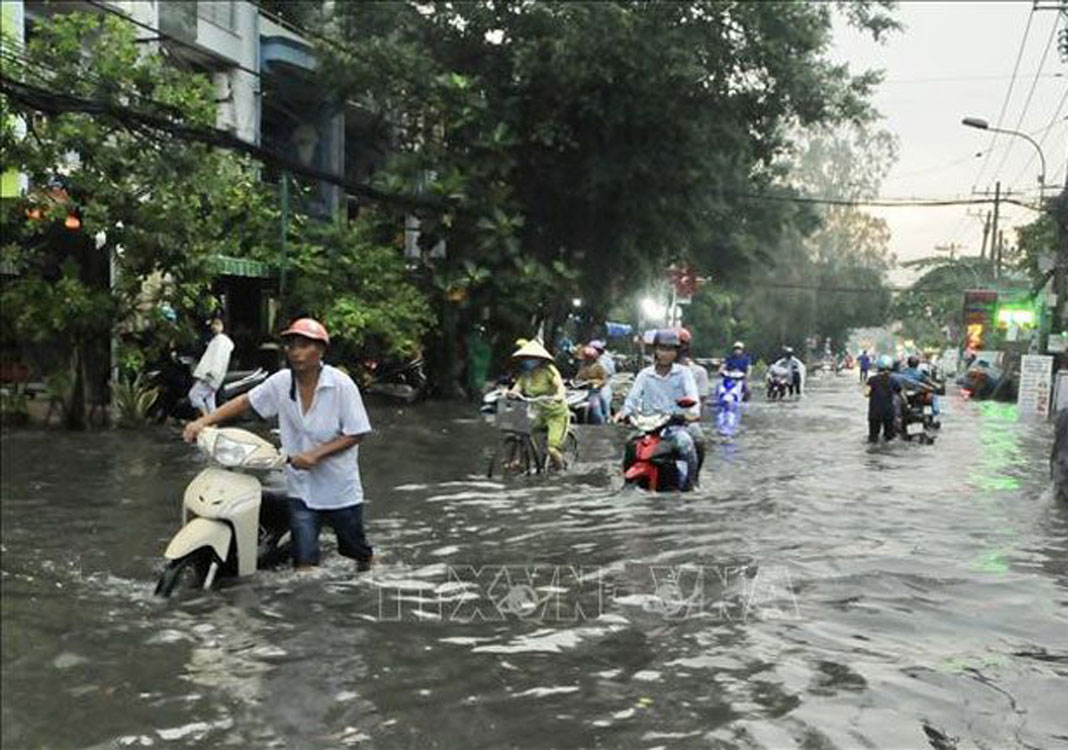HCMC – In the worst-case scenario, 473 square kilometers or nearly a quarter of HCMC will be flooded at the end of the 21st century if sea levels rise 100 centimeters, according to the predictions of an anti-flooding and wastewater treatment plan for the 2020-2030 period, which has been approved by the HCMC government.
Under the plan, HCMC is one of the world’s 10 cities most vulnerable to the impact of climate change. If climate change continues, in the late 21st century, the city’s inundated area will be 128 and 204 square kilometers, with sea levels rising 65 and 75 centimeters, respectively, Thanh Nien Online newspaper reported.
According to statistics from the municipal government, as of 2020, the city addressed flooding on 11 of 17 streets, which reported regular flooding due to the rains. In addition, flooding on 14 of 23 streets was temporarily stopped.
In the 2020-2025 period, the city will continue employing solutions to address flooding on the remaining 15 streets.
The city has improved its drainage system. Large projects to revitalize the urban landscape and improve the water environment have proved their effectiveness, such as a project to improve the water environment in the Nhieu Loc-Thi Nghe and Tan Hoa-Lo Gom canals.
However, the city still has shortcomings, such as asynchronous investment. Some streets do not have water drainage systems, while other areas have wastewater treatment plants but have yet to build wastewater collection and transmission systems.
It is impossible to completely control floods, so HCMC set a target to maintain its achievements and prevent flooding in areas, which were addressed in the 2016-2020 period, and to continue studying flood control strategies that are environmentally friendly and require the least possible capital.
The city will also develop a wastewater drainage system in the eastern area of the city, complete the first phase of the Nhieu Loc-Thi Nghe wastewater treatment plant, increase the capacity of the Binh Hung wastewater treatment plant and call for investors for the remaining wastewater treatment projects.
In the 2026-2030 period, the city will enhance predictions about flooded areas to take the initiative in responding to climate change, invest in upgrading the drainage system and waterway tourism projects and build wastewater treatment plants in the north, west and south of the city.
Further, the city will build seven regulating reservoirs and execute 70 projects to improve wastewater drainage systems.
According to the HCMC Technical Infrastructure Management Center, the city poured nearly VND26 trillion into anti-flooding projects from 2016 to 2020.









